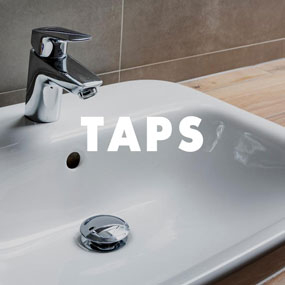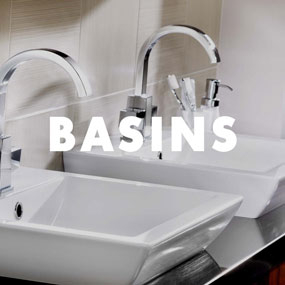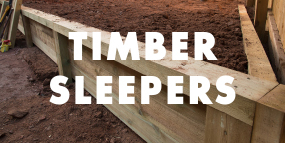A rainwater gutter system serves as the primary defence mechanism for any building during intense downpours. By channelling rainwater away from the roof through the gutter and downpipe into the drainage system, the building's structure is shielded from potential water ingress and its accompanying issues.
Proper installation and maintenance of the rainwater system are paramount to ensure the longevity and optimal performance of the gutter and downpipe systems. Here's a step-by-step guide to help you install your guttering system correctly:
Step 1 - Planning and Preparation:
Carefully plan your installation, ensuring you have the necessary tools, especially when working at heights, and appropriate personal protection.
Step 2 - Fitting Running Outlets:
Secure running outlets above drains or gullies using 25mm x 5mm corrosion-resistant screws, ensuring efficient water drainage.
Step 3 - Calculating Fall:
Install guttering with a downward fall towards the rainwater outlet, allowing for a steady runoff (1mm for every 600mm). The running outlet should be at the lowest point on the gutter run.
Step 4 - Fitting Fascia Brackets:
Fix the first fascia bracket furthest from the outlet, maintaining the required fall. Use a line to establish a straight gutter line. Install fascia brackets at equal intervals, with a union bracket for joined gutter lengths.
Step 5 - Cutting Gutter to Size:
Cut the gutter to length using a saw, filing away any burrs. Account for expansion lines marked in the fittings.
Step 6 - Fitting the Gutter:
Lubricate seals with silicone spray. Position each gutter length with the back edge under each fitting, rotating down and clicking the front edge into place.
Step 7 - Fitting Downpipe:
If needed, install an offset between the running outlet and downpipe. Ensure connections retract at least 5mm for expansion before fixing to the wall. Use a spirit level for vertical alignment. Mark, drill, plug, and fix the downpipe to the wall. Hoppers and an offset may be necessary, and a drainpipe shoe should direct water into the gully. Water test the system to confirm proper fall and connection fittings.
Shop Guttering
For more detailed information, refer to the video demonstrating the installation of the 112mm Roundstyle Cascade cast iron effect gutter and 68mm round downpipe.
When chosen wisely, a rainwater gutter system becomes a crucial building element, offering optimal protection during periods of heavy and intense rainfall.
Performance:
Navigating the plethora of options in the market requires careful consideration of factors such as performance, cost, aesthetics, ease of installation, and maintenance. Guttering and drainage play a pivotal role in a building's functionality, efficiently directing rainwater away from the roof to prevent overspilling, as mandated by Part H of Building Regulations.
Capacity and Design:
Specifiers and contractors must assess local weather conditions, impact on underground drainage, roof catchment area, gutter capacity, support, expansion allowance, and fall calculations for an efficient rainwater system design. Tailoring the system to the region's rainfall is crucial; for instance, areas with higher precipitation may benefit from higher capacity systems like Brett Martin's Prostyle 106mm gutter for domestic properties.
Aesthetics:
Aesthetics should not be an afterthought, and a well-specified rainwater system should complement the building's style. Options like PVC, aluminium, or cast iron offer diverse colour choices and gutter styles, impacting the property's exterior. Plastic rainwater systems can emulate a heritage look at a fraction of the cost of cast iron alternatives.
Ease of Installation:
Considering installation challenges, cast iron drainage systems are heavy and require on-site cutting, posing safety concerns and potential delays. In contrast, plastic systems are lighter, facilitating safer installation at heights, easy manoeuvring, simple cutting, and quick fitting. External fixing lugs and integral seals expedite the installation process without the need for extra-cost fixing kits or nuts and bolts.
Maintenance:
Regular maintenance is essential to prevent rainwater systems from causing damage. Gutter and downpipes should be checked for debris accumulation, especially in areas with abundant foliage. Plastic and uPVC rainwater systems, being self-coloured, eliminate the need for painting and are resistant to rust and corrosion.
Cost:
While cast iron may have an attractive appearance, it incurs higher material and installation costs, coupled with demanding maintenance. Cost-effective alternatives like Brett Martin's Cascade cast iron effect rainwater system provide traditional aesthetics without the associated expenses.
Ensuring the proper maintenance of your rainwater drainage system is just as essential as selecting the right system for your home.
Why is it necessary to maintain my rainwater drainage system?
The exterior of your home is constantly exposed to varying weather conditions, and the accumulation of debris and dirt can hinder the effectiveness of drainage. Regular maintenance of your gutter system prevents secondary issues such as mould growth and damage to the home's exterior.
What safety precautions should I take?
Given that gutter maintenance involves working at heights, thorough research into necessary safety precautions is crucial. This includes using appropriate personal protective equipment (PPE).
How do I clean my rainwater drainage system?
Utilise a plastic gutter cleaning tool to remove larger debris, placing it in a bucket. Follow up with a thorough rinse using a garden hose to eliminate remaining dirt and debris. Direct the hose toward the downpipe to allow debris to drain away. If water isn't draining properly, check for blockages in the downpipe and use the necessary tools to dislodge them if needed.
How often should I clean my rainwater drainage system?
As a general rule, it's advisable to inspect and clean gutters and downpipes at least once a year. However, it's particularly important to do so in autumn and spring to prepare for heavy rainfall and inclement weather. In areas with frequent heavy rainfall or high winds, more regular maintenance may be necessary.
What if I have a leaking gutter joint?
For metal guttering, scrape off debris from the joint, dry it, and inject roof and gutter sealant. In plastic guttering, check and secure fittings like union pieces and running outlets. If a gasket is dislodged or damaged, release the joint, reposition the gasket, or replace it with a new one.
What if my guttering is sagging?
If loose or incorrectly positioned brackets cause sagging, water accumulates and pools. If it's due to a loose screw, insert a wall plug and re-screw the bracket. If improperly positioned, fill the hole, and reattach the bracket correctly. Check plastic guttering to ensure it hasn't moved beyond thermal expansion guides.
What if a stop-end has been dislodged?
Refix the dislodged stop-end, and if missing, replace it with one compatible with the gutter profile and size.
What if a downpipe has been dislodged?
For a loose plastic downpipe, inspect clips and screws for proper connection. Replace missing screws with ones of the same size.
Maintaining your rainwater drainage system is essential for home protection and longevity. Neglecting upkeep can lead to costly repairs and secondary issues. By following these best practices, you can extend the life of your rainwater drainage system and ensure the ongoing protection of your home.
Shop all guttering
For more information or to speak to an expert drop into your local branch or call us on 01642 204414













